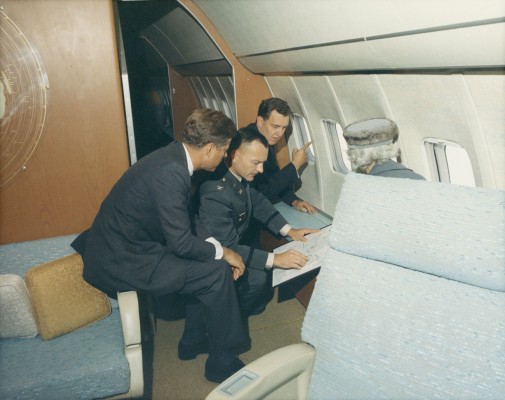Museum Displays Do Not “Cheapen” JFK’s Assassination
November 20, 2013

With this year marking the 50th anniversary of former President John F. Kennedy’s assassination, several national museums are publicly displaying objects pertaining to his assassination as a way to commemorate his death. Objects range from the eternal flame on his gravesite to the U.S. flag that was on his coffin in Arlington Cemetery to the drumsticks used during his funeral procession.
It goes without saying that these items evoke strong reactions from many Americans, especially from those who vividly remember the tragedy. It’s natural to be emotional because these displays are physical reminders of the assassination of one of our country’s most beloved leaders. Although the assassination took place approximately 30 years before I was even born, I am still affected when I see those chilling pictures of that terrible day on Nov. 22, 1963. But some people believe that these public displays are insensitive toward the former president and “cheapen” his tragic assassination. These exhibits can certainly be graphic, but they are, in no way, downplaying the death of JFK.
If anything, the displays serve as a way to bring awareness of what happened that day. By showcasing the blood-stained suit of Texas Governor John Connally or The Texas School Book Depository that Lee Harvey Oswald used to fire the shots at the limousine, the exhibits make the event seem more real—especially to the majority of the public who were not alive at this time.
Not to sound insensitive, but if all museums operated with fear of evoking negative emotional reactions from the public, then there would be no museums to speak of. Nearly every exhibition and public display have controversial aspects—just last month, there was an exhibition called “Controversies: The More Things Change…” at the Macculloch Hall Historical Museum in New Jersey. The displays received a lot of backlash because they showed pictures and objects that, according to NJ.com, pertained to “medical experimentation, immigration and the right to die.” Although these three topics are controversial in today’s society, the exhibition’s purpose was to “inspire people to consider, even reconsider, the ways in which they think about these important, frequently debated issues.”
Similar to the exhibit in New Jersey, the purpose of the JFK displays is to provide us with new insights—as is the goal of museum exhibits in general. Much of what we learn about history comes from second-hand sources like textbooks, which are sometimes biased and inaccurate. But seeing relics of historical events sheds new light on those events and allows us to acquire new perspectives and formulate our own opinions. We’re constantly complaining that the U.S. government likes to sugarcoat certain issues or events, and the JFK exhibitions are the answers—to some degree—to our complaints. Such presentations of history and historical events are as close as we, as millennials, can get to the actual scenes of the crime.
Displaying certain objects—like the presidential limousine that JFK was riding in or the historic Air Force One plane where Lyndon B. Johnson took the oath of office—are certainly controversial, yes. But it is important to recognize that the museums aren’t trying to erase the significance of the ordeal that took place in 1963; rather, they are bringing light to the event and attempting to educate people about that tragic day. It would be “cheap and offensive” if the artifacts were waxed and displayed at Madame Tussaud’s or changed in some other way that would undermine their integrity, but, just as the 9/11 Memorial was created to honor the people who died on Sept. 11, 2001, the JFK exhibits work as a way to honor our 35th President.











